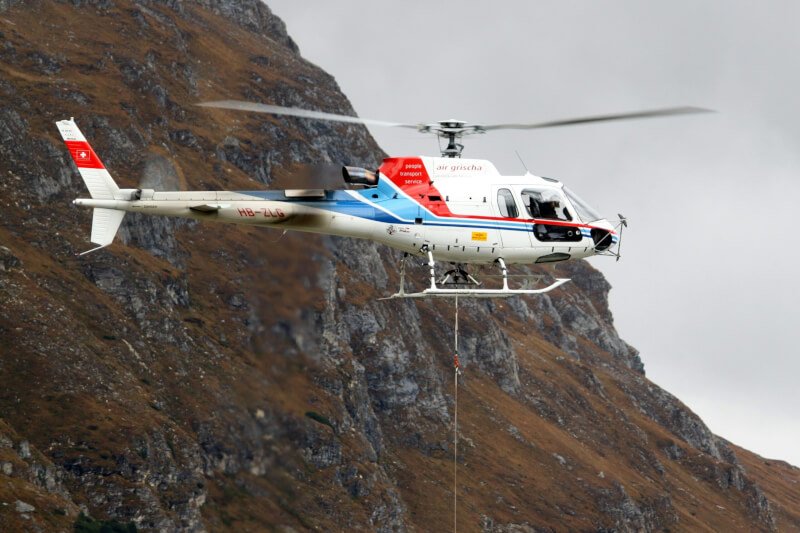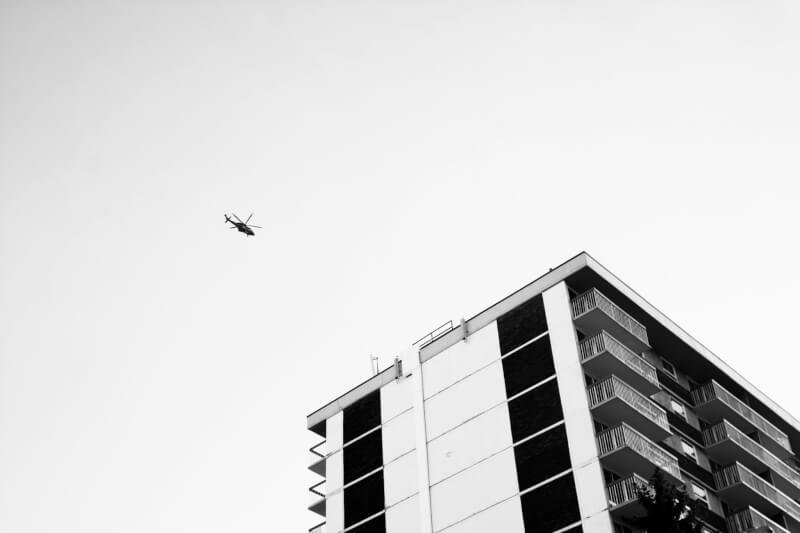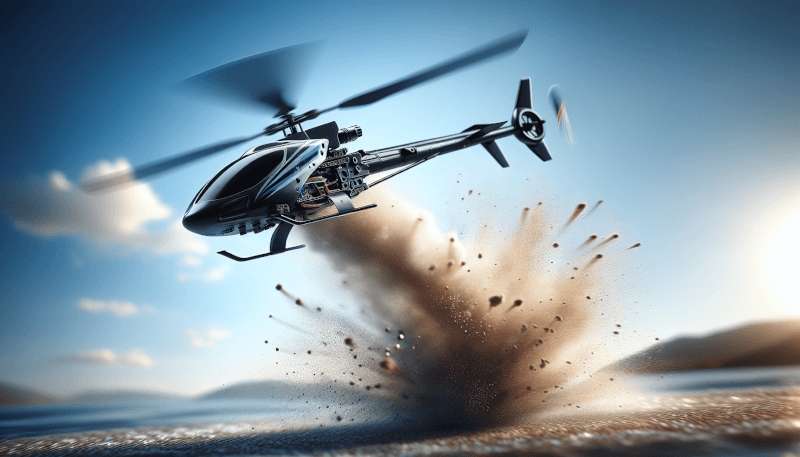If you’re ready to take your RC heli flying skills to the next level, this article is for you! Whether you’re a beginner looking to learn some impressive maneuvers or an experienced pilot in search of new tricks to master, we’ve got you covered. From loops and rolls to inverted flight and stall turns, we’ll show you step-by-step how to perform advanced maneuvers and tricks with your RC heli. Get ready to amaze your friends and wow the crowds with your thrilling aerial displays!

Choosing the Right RC Heli for Advanced Maneuvers
When it comes to performing advanced maneuvers and tricks with your RC helicopter, choosing the right model is crucial. Understanding the different types of RC helicopters is the first step in selecting the perfect one for your needs. There are various types, such as collective pitch helicopters, fixed-pitch helicopters, and coaxial helicopters. Each type has its own unique characteristics and capabilities that cater to different skill levels and flying styles.
Considering your skill level and experience is also essential when choosing an RC helicopter for advanced maneuvers. If you are new to RC helicopters or have little flying experience, it is recommended to start with a simpler model and gradually progress to more advanced ones. This allows you to build your skills and confidence before attempting more complex maneuvers.
Another important factor to consider is the size and power of the RC helicopter. Smaller helicopters are generally more maneuverable and agile, making them ideal for advanced tricks. However, they may also be more fragile and susceptible to wind conditions. On the other hand, larger helicopters are more stable in flight but may lack the nimbleness required for intricate maneuvers. It’s important to strike a balance between size and maneuverability based on your skills and preferences.
Lastly, choosing a helicopter with advanced features can greatly enhance your flying experience. Look for features such as programmable flight modes, adjustable gyro settings, and advanced transmitter programming options. These features give you more control and flexibility in executing advanced maneuvers and tricks with your RC helicopter.
Mastering Basic Flying Skills
Before venturing into advanced maneuvers, it is crucial to master the basic flying skills. Learning the fundamental controls of the RC helicopter is the first step. This includes understanding how the throttle, cyclic control, and tail rotor control work together to maneuver the helicopter in different directions. Practice these controls until they become second nature to you.
Once you are comfortable with the basic controls, start practicing basic maneuvers such as forward flight, backward flight, left and right turns, and hovering. These maneuvers will help you develop a better understanding of the helicopter’s movement and responsiveness.
Precision hovering skills are essential for executing advanced maneuvers, so dedicate time to practice hovering at different heights and positions. This will help you gain better control over the helicopter’s altitude and orientation.
Understanding flight dynamics and aerodynamics is crucial for mastering advanced maneuvers. Learn about concepts such as lift, drag, and center of gravity, as they directly affect the helicopter’s performance. Knowing how these factors influence the helicopter’s flight characteristics will enable you to execute maneuvers more effectively.

Setting Up Your RC Heli for Advanced Tricks
Before attempting advanced maneuvers, it is vital to ensure that your RC helicopter is set up correctly. Performing a pre-flight check is an important step to identify any potential issues or malfunctions. Check the main rotor blades, tail rotor, servo movements, and battery levels to ensure everything is in working order.
Adjusting the helicopter’s center of gravity can greatly impact its stability and maneuverability. Experiment with different battery positions to achieve the desired balance. Make sure to follow the manufacturer’s instructions for optimal center of gravity placement.
Optimizing control sensitivity and responsiveness is crucial for executing advanced tricks. Adjust the control settings on your transmitter to increase or decrease the sensitivity based on your preferences. This allows you to customize the helicopter’s response to your flying style.
Fine-tuning the gyro settings is essential for stabilizing the helicopter during advanced maneuvers. The gyro helps maintain stability and prevents the helicopter from drifting or wobbling. Adjust the gyro gain to achieve the desired level of stability for your maneuvers.
Executing Advanced Maneuvers
Once you have mastered the basic flying skills and set up your RC helicopter correctly, you can start executing advanced maneuvers. Performing 3D maneuvers like loops and rolls adds an exciting element to your flights. Practice these maneuvers in a safe and spacious area to perfect your timing and control.
Executing inverted flight and flips adds a new level of complexity to your flying skills. Start with small flips and gradually increase the intensity as you become more comfortable. Inverted flight requires precise control over the helicopter’s orientation, so make sure to practice in a controlled environment.
Mastering autorotation is a crucial skill for emergency situations. In the event of a motor failure or loss of power, knowing how to execute an autorotation allows you to safely land the helicopter. Practice autorotations at different altitudes to build your confidence and ensure a smooth landing.
Practicing high-speed maneuvers and banked turns showcases the agility and speed of your RC helicopter. Start with gradual turns and gradually increase the bank angle as you become more experienced. Remember to maintain a safe altitude and distance from obstacles during high-speed maneuvers.

Exploring Advanced Flying Techniques
As you become more comfortable with advanced maneuvers, it’s time to explore advanced flying techniques. Learning advanced collective management involves manipulating the collective pitch control to perform complex maneuvers. Practice gradual transitions from positive to negative pitch to master this technique.
Understanding cyclic and tail rotor control is crucial for executing precise and controlled movements. The cyclic control alters the angle of the main rotor blades, allowing the helicopter to move in different directions. Perfect your control over the cyclic input to perform intricate flying patterns.
Applying advanced throttle and pitch curves allows you to fine-tune the helicopter’s response to your inputs. Experiment with different curve settings to achieve the desired level of aggressiveness or smoothness in your maneuvers.
Practicing nose-in and tail-in flying orientations adds another layer of difficulty to your flying skills. Start by practicing hovering in these orientations before attempting more complex maneuvers. This helps build your spatial awareness and control over the helicopter.
Tricks and Stunts for Impressive Aerobatics
Once you have mastered the advanced flying techniques, it’s time to showcase your skills with impressive aerobatic tricks and stunts. Performing tic tocs and piro flips involves rapid changes in the helicopter’s orientation and direction. Practice these maneuvers in an open area, ensuring you have enough space to recover in case of mistakes.
Executing hurricanes and funnels adds a dynamic visual element to your flying. These maneuvers involve circular movements with the helicopter while maintaining control and stability. Start with wider circles and gradually reduce the radius as you gain confidence.
Mastering chaos and piro loops require precise control and coordination. These tricks involve complex combinations of flips, rolls, and inverted flight. Practice these maneuvers in a controlled and methodical manner to maintain stability and control.
Learning inverted autorotation and torque rolls takes your aerobatic skills to the next level. These maneuvers involve complex combinations of inverted flight and autorotation techniques. They require precise timing and control, so practice in a spacious and controlled environment.

Advanced Transmitter Programming
To maximize your control and customization options, understanding transmitter programming is essential. Familiarize yourself with transmitter settings and modes, as they allow you to configure various parameters and functions of your RC helicopter. Refer to the transmitter’s manual for detailed instructions on programming options.
Setting up dual rates and exponential settings allows you to adjust the sensitivity and response of the helicopter’s controls. Dual rates help you switch between different control settings for beginners and advanced pilots. Exponential settings modify the response curve of the controls, making them more or less sensitive to small stick movements.
Programming flight modes and idle-up settings is essential for executing different maneuvers. Flight modes allow you to switch between different pre-set configurations, such as sport mode or 3D mode. Idle-up settings adjust the throttle and pitch curve to provide maximum power and responsiveness during advanced maneuvers.
Configuring mixing and specialized functions can further enhance your flying experience. Mixing allows you to combine multiple control inputs to achieve complex movements. Specialized functions, such as auto-leveling or gyro gain adjustment, provide additional features and customization options.
Safety Precautions for Advanced Maneuvers
When performing advanced maneuvers, safety should always be a top priority. It’s important to fly in appropriate areas that adhere to local regulations and restrictions. Choose open spaces that are clear of people, buildings, and other obstacles.
Maintain a safe distance from people and property while flying your RC helicopter. Accidents can happen, and it’s crucial to minimize the risk of injury or property damage. Always be aware of your surroundings and avoid flying near crowded areas.
Using appropriate protective gear and safety equipment is crucial for your own safety. Wear goggles or safety glasses to protect your eyes from debris and ensure a clear line of sight. Consider wearing gloves to protect your hands from rotor blades and other moving parts.
Perform regular maintenance and inspections on your RC helicopter to ensure it is in optimal condition. Check for any loose screws or parts, damaged blades, and worn-out components. Regularly inspect the battery and electrical connections to minimize the risk of malfunctions.

Troubleshooting and Problem Solving
Advanced flying can sometimes lead to issues and malfunctions. Identifying common issues during advanced flying is vital for troubleshooting and problem-solving. Learn to recognize flight instabilities, such as vibrations, drift, or unresponsive controls. These can be indicative of issues with the rotor blades, gyros, or control linkages.
Troubleshooting flight instability and control problems requires careful analysis and adjustment of various components. Check for proper balance and alignment of the rotor blades, as imbalances can lead to vibrations and instability. Make sure the servo connections and control linkages are secure and properly adjusted.
Addressing mechanical and electrical malfunctions requires a systematic approach. Inspect the motor, ESC, and battery connections for any abnormalities. Check for loose or damaged wires, as well as overheating components. It may be necessary to seek professional assistance or replace faulty components if needed.
If you encounter difficulties or have questions during your advanced flying journey, don’t hesitate to seek help from experienced RC helicopter pilots. Joining local RC heli clubs and communities provides a valuable network of knowledge and support. Attend workshops and training sessions to learn from experienced pilots and gain valuable insights.
Tips for Progressing Further in RC Heli Flying
To continue progressing and pushing the boundaries of your RC helicopter flying, consider the following tips:
Joining local RC heli clubs and communities allows you to connect with like-minded enthusiasts and experienced pilots. This provides opportunities for learning, sharing experiences, and gaining valuable feedback.
Attend workshops and training sessions organized by RC heli clubs or hobby shops. These sessions often cover advanced techniques, troubleshooting, and specialized topics that can further enhance your skills.
Seek feedback and guidance from experienced pilots. Don’t be afraid to ask questions or request assistance in polishing your flying skills. Experienced pilots can provide valuable insights and help you overcome challenges.
Experiment with new maneuvers and push your boundaries. Don’t be afraid to try new tricks or stunts. With practice and persistence, you can expand your skillset and take your RC helicopter flying to new heights.
Remember, progressing in RC heli flying takes time, practice, and dedication. Enjoy the journey and have fun exploring the limitless possibilities of advanced maneuvers and tricks with your RC helicopter.


